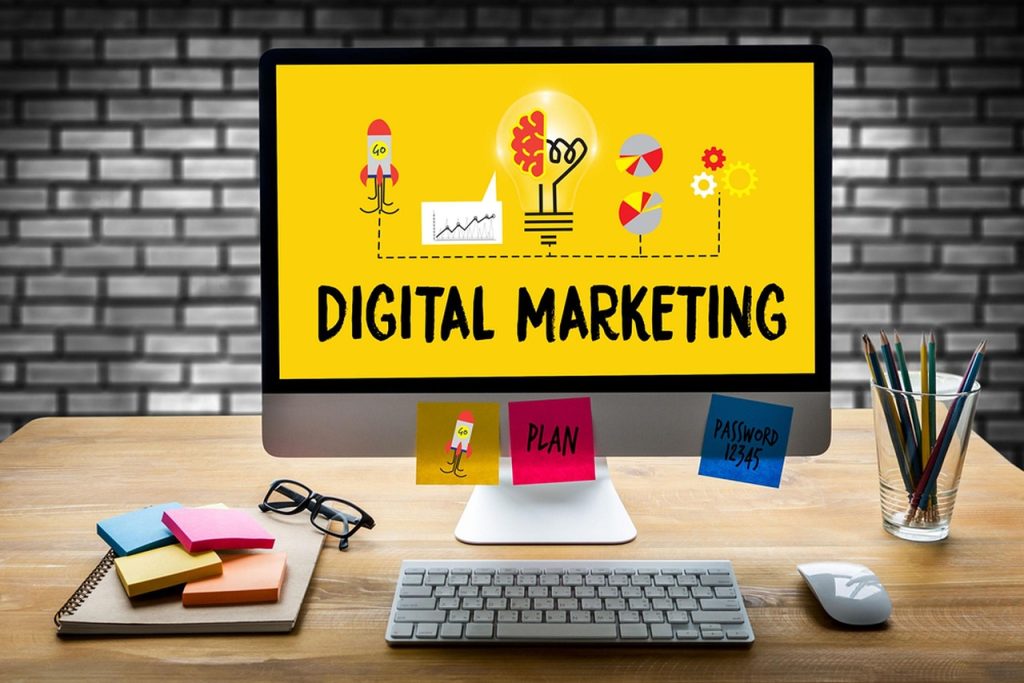
The 5 Most Important Manufacturing Trends for 2021
The manufacturing industry is both complex and, at the same time, full of opportunities for business owners to hit it big. The trends in manufacturing in 2021 point toward a future full of changes, mostly with respect to technology but also with respect to the workforce.
While those anticipated changes will make the manufacturing industry better in certain respects, in other ways those changes will make it more difficult to run a manufacturing business. Before discussing the future of the manufacturing industry, how does the manufacturing industry look today?
Trends in manufacturing 2021, according to the National Association of Manufacturers:
- Manufacturing employees make up 8.6% of the entire U.S. workforce
- Every dollar spent in manufacturing adds $1.86 to the U.S. economy
- Within the past 10 years, foreign direct investment in manufacturing companies has nearly tripled from roughly $570 million in 2006 to more than $1.6 trillion by 2017
- In the last 25 years, exports of U.S.-manufactured products have increased by 400%
- Overall output in the manufacturing sector has grown 250% over the past 30 years
With current manufacturing industry trends in mind, we can use current trends to predict what the near future will bring.
What does the future of the manufacturing industry have in store?
What are the latest trends in manufacturing technology?
Why is risk management in the manufacturing industry important?
We’ll answer these questions, and much more, in this informative guide to risk-reducing tips for manufacturers.
The 5 manufacturing trends for 2021
Staying competitive in the manufacturing industry isn’t an easy task, and innovations in technology don’t necessarily mean it will be easier; in fact, the challenges that come along with new technologies can actually make it more difficult to remain competitive.
But the one effect that most technologies have, which is more-or-less universal, is that it makes manufacturing safer. Here we’ll consider the top 5 manufacturing industry trends which are now in vogue, along with their pros and cons.
Top 5 manufacturing trends for 2021:
1. IoT
2. AI/Machine learning
3. 3D printing
4. AR/VR
5. Biotech
A closer look at the latest trends in manufacturing
1. IoT
The Internet of Things (IoT) is essentially a network of connected machines which are linked to servers. This network collects and analyzes data which is generated by the machinery itself. The IoT included 3.6 billion connected devices this year and is expected to add more in 2021. Advancements made in 5G connectivity are expected to contribute to the accelerated growth of the IoT.
Pro: As manufacturing equipment becomes more digitized, more data is made available, which makes it easier to fix problems as they arise and optimize equipment performance over time. If affording equipment is a concern for you, consider the variety of equipment financing options.
Con: With increased connectivity comes increased exposure to the possibility of having systems hacked. Defenses against cybercrimes are a necessity in this new age of manufacturing technology.
2. AI/Machine learning
Artificial intelligence (AI) is the talk of the town and is becoming increasingly relevant to the manufacturing industry as IoT expands. As IoT gathers the raw data from manufacturing equipment, AI analyzes it (much faster than humans can) and produces meaningful insights from that data. Machine learning is essential to making full use of the IoT, as AI continuously evolves new and improved strategies of sifting through masses of information.
Pro: The ability to significantly reduce the amount of time, energy, and resources invested in data processing and analysis.
Con: As machine learning goes along, the system will inevitably focus on certain factors and disregard “useless” information. Too much reliance on AI to provide accurate and useful information can lead to manufacturers developing blind spots which they are completely oblivious to.
3. 3D printing
Manufacturing took a huge leap forward 200 years ago during the industrial revolution as a result of new motorized machines. Suddenly, projects that used to take days were able to be done in a matter of hours or even minutes. Today, with the advent of 3D printing, technology has once again revolutionized the manufacturing industry.
Pro: By reducing production time, increasing replicability, and decreasing the number of errors, 3D printing is allowing the manufacturing industry to produce more reliable goods at a lower cost and in less time.
Con: All of those benefits will come at a price. While big industrial manufacturers might not blink twice at spending $200,000 on a high-end 3D printer, the smaller manufacturer will need to think more carefully on making such an investment. If there are expenses that your company is struggling to meet, you should consider taking an unsecured business loan.
4. AR/VR
Augmented reality and virtual reality technologies have begun to make their way into the manufacturing industry, and are expected to continue having an impact in the years to come. One example of how AR and VR are used today is wearable devices which allow manufacturers to observe system attributes in real time. It’s difficult to accurately predict exactly how AR technology will grow and change, but what is certain is that it will doubtlessly have a real impact on manufacturing in the future.
Pro: Manufacturing workers will have the ability to observe system attributes in real time, and [ideally] stop problems at their outset.
Con: Proper training will be crucial to the application of AR and VR in the manufacturing industry in an effort to minimize the potential for the technology to act as a distraction on the job.
5. Biotech
Biotechnology is the use of living systems or organisms to develop or make products. Whether it’s growing a new organ for transplant or producing large amounts of vaccines, biotech is finding its way into all segments of medicine. While it’s quite different from other types of manufacturing in certain respects, biotech manufacturing still uses machines to turn raw materials into goods or products.
Pros: Medicine can be produced more quickly and at a lower cost, allowing treatments for diseases to be developed and administered more effectively.
Cons: Smaller manufacturers will likely struggle to stay competitive with their industrial-sized competitors since larger companies will always have the advantage of expendable resources that smaller businesses simply lack. Become helps small businesses improve their funding odds by providing tailored guidance through the business loan application process.

The future of the manufacturing industry
Now that you’ve got a better picture of the latest trends in manufacturing technology, you’ll need a clearer idea of the future of the manufacturing industry demands in order to be fully prepared.
Risk management in the manufacturing industry is absolutely essential to guarantee the safety of workers and the success of the business. Make sure that you’re prepared to take on the future of the manufacturing industry, and all of the challenges that come along the way, by keeping these 3 manufacturing trends in mind.
What the future of the manufacturing industry has in store:
1. Labor shortage
It’s common knowledge at this point that the overwhelming tendency among high school graduates is to go to a university. This is resulting in lacking workforces in industries across the board, manufacturing not in the least. Over the next 10 years, there will be an estimated 2.4 million positions left unfilled in the manufacturing industry.
What can be done: Many business owners in the manufacturing industry are choosing to develop cooperative programs with primary and secondary education institutions in order to illustrate the importance of manufacturing to the economy as a whole. Some manufacturers are also beginning to implement training and hiring programs in an attempt to incentivize young men and women to join the manufacturing industry. Be sure to explore the many types of manufacturing financing that your business can use to cover expenses that fall beyond your budget.
2. Cybersecurity
One alternative solution to the gap in the workforce is the adoption of advanced technology. But while advanced tech is an advantage in many ways, there is one universal trait that threatens the safety of any manufacturing company who uses it. Cybercriminals find and use weak points in a network in order to steal either intellectual property or money. One way or the other, having the integrity of your company’s network compromised can have enormous consequences.
What can be done: The only real defense against cybercrime is to use cybersecurity software and/or services. Basic services can run around $50 annually, while high-end cybersecurity services can exceed $6,000. Research has found that the cost of cybersecurity should run around 14% of the company’s IT department budget. In the grand scheme of things, it’s still much more affordable to be safe than sorry – the cost of having a breach in security is something to avoid.
3. Global market
There’s a lot to be said about how the global market can influence manufacturing trends inside the U.S. There are the recent changes in America’s approach to trade with its neighbors north and south, the building tensions with China over trade tariffs, outsourcing abroad, shipping costs, shifting prices of raw materials, environmental regulations, and constantly-changing exchange rates. These are serious factors that need to be taken into account wisely and responsibly in order for any manufacturing company to make it.
What can be done: Staying up-to-date with manufacturing trends in the global market is essentially the only way to be prepared to face any of the situations that could arise. Read economic news. Listen to what political leaders are saying about these issues. Subscribe to blogs, podcasts, or any other form of media that can keep you informed on manufacturing trends.
Of course, the type of business will affect the kind of industry loans a business needs, as well as the specific circumstanes that businses finds itself in. Be sure to weigh your options carefully in order to choose the right funding solution for your business.
Bringing it together
You’ve been given the breakdown, now it’s time to put it back together again. The fact is the latest trends in manufacturing paint a complex picture of the future. There have been great developments in the recent past, and there are very real challenges that need to be met in the near future of the manufacturing industry. There are pros and cons with the innovations made in the manufacturing industry which will need to be weighed and adjusted-for as time goes on.
In any case, we hope that you find the information provided here valuable and useful. Feel free to share it with colleagues. And if you feel that there any questions that were left unanswered, please leave us a comment below.




